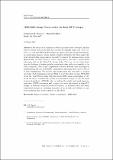Files in this item
JPEG2000 image compression on solar EUV images
Item metadata
| dc.contributor.author | Fischer, Catherine | |
| dc.contributor.author | Mueller, Daniel | |
| dc.contributor.author | De Moortel, Ineke | |
| dc.date.accessioned | 2017-12-21T00:32:04Z | |
| dc.date.available | 2017-12-21T00:32:04Z | |
| dc.date.issued | 2017-01 | |
| dc.identifier | 248100846 | |
| dc.identifier | 5e09da8e-0360-4fd1-9cd7-b5e82447935e | |
| dc.identifier | 85006809815 | |
| dc.identifier | 000390708400015 | |
| dc.identifier.citation | Fischer , C , Mueller , D & De Moortel , I 2017 , ' JPEG2000 image compression on solar EUV images ' , Solar Physics , vol. 292 , 16 . https://doi.org/10.1007/s11207-016-1038-3 | en |
| dc.identifier.issn | 0038-0938 | |
| dc.identifier.other | ORCID: /0000-0002-1452-9330/work/39526498 | |
| dc.identifier.uri | https://hdl.handle.net/10023/12367 | |
| dc.description.abstract | For future solar missions as well as ground-based telescopes, efficient ways to return and process data has become increasingly important. Solar Or-biter, e.g., the next ESA/NASA mission to explore the Sun and the heliosphere,is a deep-space mission, which implies a limited telemetry rate that makes efficient onboard data compression a necessity to achieve the mission science goals.Missions like the Solar Dynamics Observatory (SDO) and future ground-based telescopes such as the Daniel K. Inouye Solar Telescope, on the other hand,face the challenge of making petabyte-sized solar data archives accessible to the solar community. New image compression standards address these challenges by implementing efficient and flexible compression algorithms that can be tailored to user requirements. We analyse solar images from the Atmospheric Imaging Assembly (AIA) instrument onboard SDO to study the effect of lossy JPEG2000(from the Joint Photographic Experts Group 2000) image compression at different bit rates. To assess the quality of compressed images, we use the mean structural similarity (MSSIM) index as well as the widely used peak signal-to noise ratio (PSNR) as metrics and compare the two in the context of solar EUV images. In addition, we perform tests to validate the scientific use of the lossily compressed images by analysing examples of an on-disk and off-limb coronal loop oscillation time series observed by AIA/SDO. | |
| dc.format.extent | 22 | |
| dc.format.extent | 14794061 | |
| dc.language.iso | eng | |
| dc.relation.ispartof | Solar Physics | en |
| dc.subject | Image processing | en |
| dc.subject | Image compression | en |
| dc.subject | JPEG2000 | en |
| dc.subject | QA75 Electronic computers. Computer science | en |
| dc.subject | QB Astronomy | en |
| dc.subject | QC Physics | en |
| dc.subject | NDAS | en |
| dc.subject.lcc | QA75 | en |
| dc.subject.lcc | QB | en |
| dc.subject.lcc | QC | en |
| dc.title | JPEG2000 image compression on solar EUV images | en |
| dc.type | Journal article | en |
| dc.contributor.sponsor | Science & Technology Facilities Council | en |
| dc.contributor.sponsor | European Research Council | en |
| dc.contributor.institution | University of St Andrews. Applied Mathematics | en |
| dc.contributor.institution | University of St Andrews. School of Mathematics and Statistics | en |
| dc.identifier.doi | 10.1007/s11207-016-1038-3 | |
| dc.description.status | Peer reviewed | en |
| dc.date.embargoedUntil | 2017-12-20 | |
| dc.identifier.grantnumber | ST/N000609/1 | en |
| dc.identifier.grantnumber | 647214 | en |
This item appears in the following Collection(s)
Items in the St Andrews Research Repository are protected by copyright, with all rights reserved, unless otherwise indicated.

